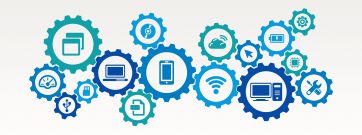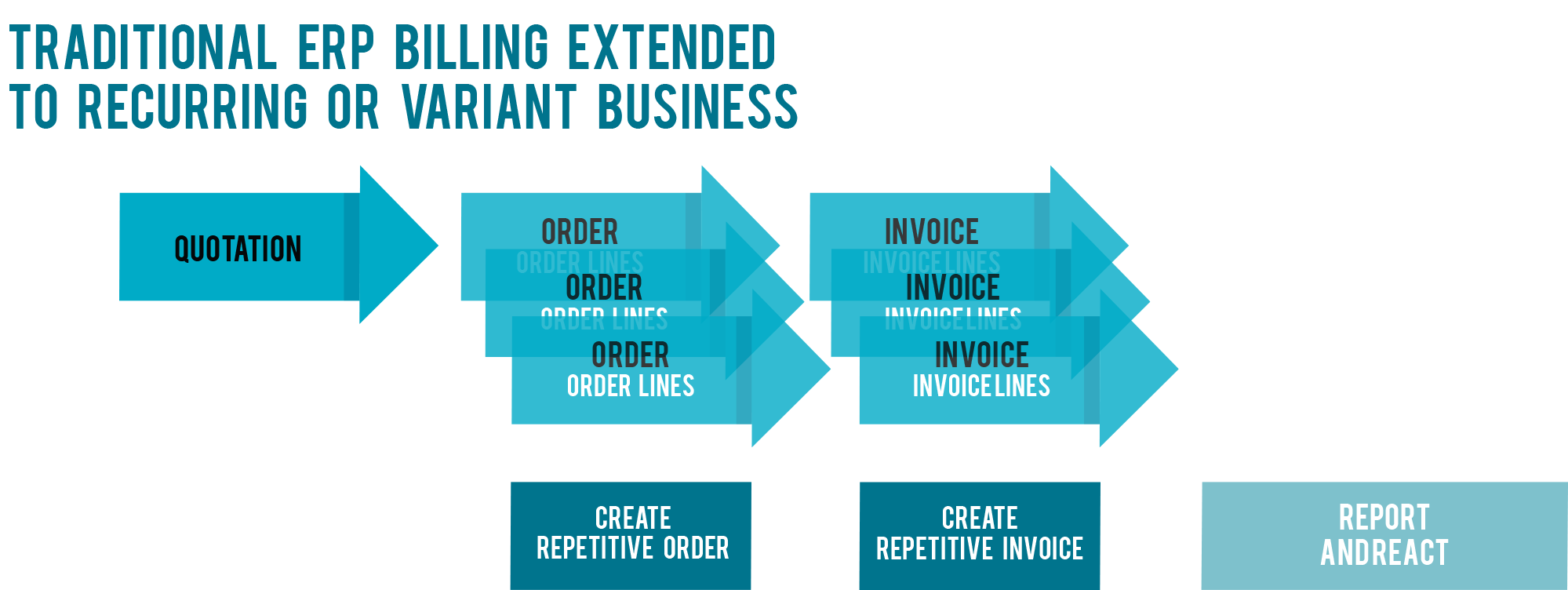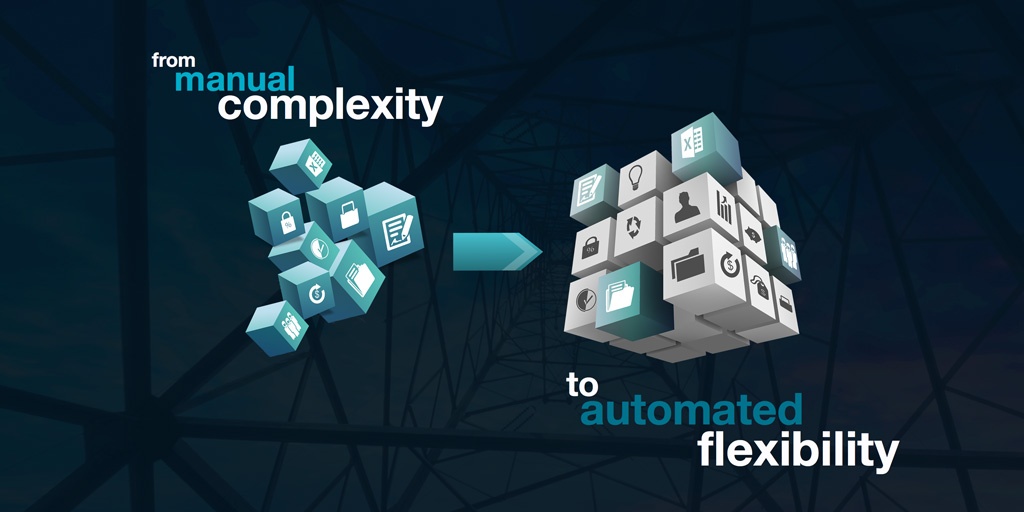Why ERP Is Not Smart Enough with Recurring Revenue?
Good ERP system is an essential tool to support product sales, manufacturing, warehousing, delivery and billing. However, the ERP mode of operation...

Don’t we love ERP solutions? Besides being sometimes crumble and difficult to master they get the job done. Goods are delivered and books get closed. Decades of development in mastering supply chains of tangible goods has made them great in running linear business models.
Due to the supply chain driven history of these packages, there is, however, a big gap to support the intangible deliverables of service age businesses. Forcing in non-linear service deliverables creates complexities that are handled by human operators catching up loose ends and tying them back together. In practice this means seeking information and re-entering it to multiple places, and performing spreadsheet processing in between.
Multilayered service contracts are a good example of inadequate ERP support. Hierarchical and rigid bill-of-material model does not support the flexible service offering your customer needs.
These partnership style contracts typically contain a combination of fixed and variable fees. Fixed fees may include access to services for a number of systems covered within a period, and variable fees are driven based on performance and usage based criteria. Additionally the fees are tied to locations, individual systems in installed base and varying service level requirements.

The challenge to the ERP systems is that there is no flexible bill of material to base these service business operations on. Services can be performed in a flexible order and certain tasks may or may not be done at all periods of time. This puts the ERP on it’s knees.
The information does of course exist. The contract is available at least scanned, and may be stored in the ERP on a level that depicts the billing schedule. Operations performed in the field are most likely reported in a service tracking system and remote monitoring assists in triggering various tasks.
But collecting all the relevant information to take care of the actual orchestration of work, invoicing and reporting to customer is a labor intensive operation. Remote monitoring can produce a required report of usage hours, service tracking system the number of visits, time tracking the used hours and physical deliverables are entered as orders and so on. Then people verify all the collected information against the contract and create the invoices according to the schedule. It is not rare that the service contract invoice then is a one line invoice in the ERP – meaning you have lost a lot of transparency as to how the revenue meets the costs. Not to mention the customer figuring out what the invoice is about.
This human dependent manual data collection from multiple places has many drawbacks. It takes time delaying the billing and is prone to errors. Robustness is not exactly the term here – the operation is very individual dependent. The employees are stressed, billing is late and cash is delayed. My colleague Mervi has written about this topic in her excellent blog post.
A worst case scenario is that, to avoid manual work, you decide not to offer flexible services to the market. You have the skills to perform the services, but due to lack of proper support from operational business IT engine you hesitate entering the market. This I call the Gap Trap. Do not fall into it. Also do not give up even if you are in the manual wizardry. Go after improvement, scalability and robustness. The era of service business industrialization is now!
To optimize the operation, you could of course tailor the ERP solution for your specific needs. That is not a good option. For a reason. Your CIO will not want you to do it, and you really should not even if given the permission. Tailoring is expensive and complicates the future upgrades that again will be even more expensive. It is a very negative spiral. Not to mention the hostage situation you will then be in with your customized ERP vendor.
My strong recommendation is to go after improving the manual operations by utilizing dedicated tools for intelligent automation of business processes. If you are a service business executive this is your problem and you need to solve it. Make a business case where you calculate the operational costs and net profit effect now. Then scale it against your growth plans. You will end up with bottom line effect number that might surprise you.
Go to your CIO with your business case. You have a challenge, and you have the numbers. You are in great position to go for investing into efficiency. The gatekeepers of the IT infrastructure are not too happy if someone proposes additional solutions. But is it then better to hire more and more people to an operation which is not robust? I think you have a compelling case and a modern CIO will see the need and is actually glad for someone bringing in sensible, calculated challenges to solve.
In the example of multilayered service contracts, the solution is a service business software that manages the contract coverage with all the interdependencies, operations, pricing and costing rules. Within a billing process it reads the required information from devices and source systems – processes it against the rules and logic of the contract and prepares automatically the invoices to the customer or a human operator for a review. It is a solution that mimics a human being performing routine tasks.
The invoice, with the line items deemed necessary, are sent to the ERP with the cost information collected. Manual work decreases and transparency of the information is dramatically improved – without side effects on data integrity. A dream addition in the IT architecture. A missing link that puts your ERP on steroids.

Good ERP system is an essential tool to support product sales, manufacturing, warehousing, delivery and billing. However, the ERP mode of operation...

What Is the Role of ERP? For any kind of business, ERP systems have established an extremely important role in the past years – even to be counted as...

Last week we published a blog post: “10 Reasons You Should Invest in Flexible Pricing and Billing”. I thought to continue about that, by explaining...